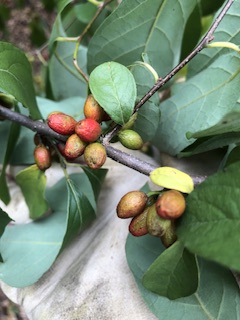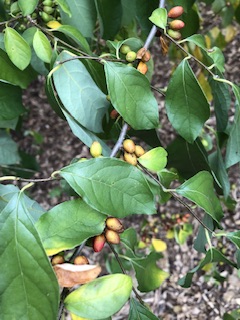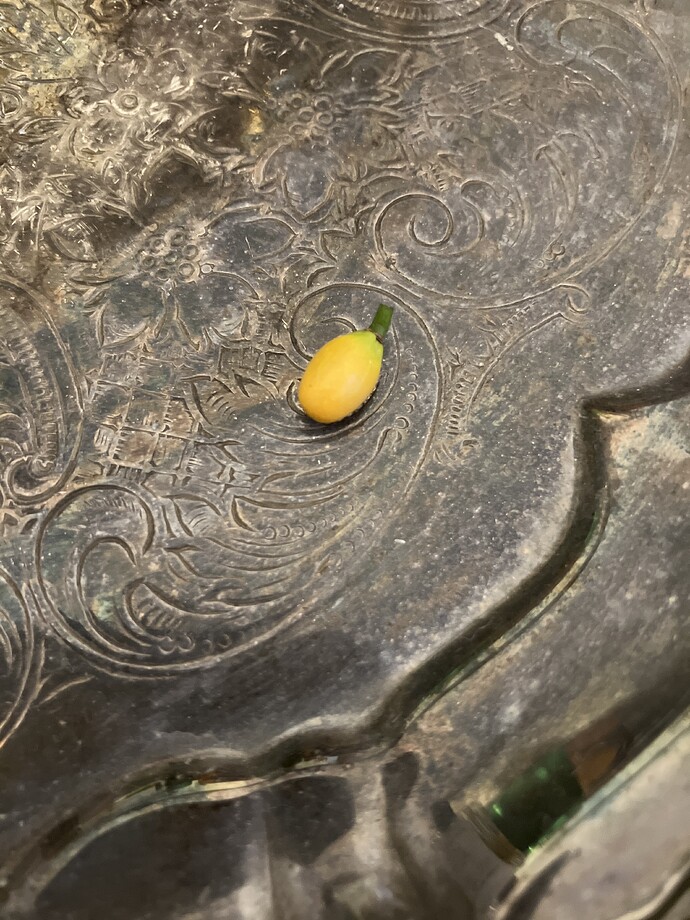@Chills cant give you a scientific answer on germination but it’s very high in my experience.
I clean the seeds of all flesh and store in ziplocs with a few drops of water in the fridge.
They go into the fridge in late September and stay until at least April. Mold can be an issue if not careful but it’s never caused real problems for me.
One thing that does happen is by March or so some seeds will split open partially. However they still seem to germinate readily.
This thread inspired me to up pot my three seedlings which were looking a bit too big for their 1gal pots. While loosening up the roots for replanting, I was not surprised to find they were fragrant. However, they didn’t smell like the leaves (I’ve not yet experienced the berries for comparison), but instead they smelled exactly like tea tree oil (Melaleuca alternifolia). I can’t find any references to the roots being used for anything which seems strange given how potent they smell and now I wonder if they’re producing some of the same active compounds found in tea tree.
Interesting!
I work for a woody plant seedling nursery. They concluded after many attempts that a good way to grow Spicebush in bulk (i.e. at the thousands of seedlings level), is to simply fresh sow the entire berry after collecting.
This is unusual in that many fruits have germination inhibitors in their flesh, which must be removed for good results.
It is under consideration to attempt this with another species in a whole other plant family, one which has otherwise been difficult to grow. I don’t think that is wise, but have been thinking about how the mechanics of sowing an entire berry would work. Could it be that the aromatic compounds in Lindera have anti-microbial properties, which then help protect the seed from pathogens?
Any experiences/opinions with sowing Spicebush seed appreciated.
One of the seedlings has already shown its hand - it is red-fruited ![]()
2 others have yet to show any color break but will know in a few weeks.
@Lucky_P do you think the virus would be passed on to seedlings of these infected bushes?
I would lean towards saying no, but…
Also, I noticed those plants loaded with fruit aren’t looking so great:


Last year was so hot and dry, the fruit desiccated on the plant. Still tasted good and saved me time drying!
But it’s been very wet this year until recently and the fruit had been nice and plump as in my previous pics.
I’m not sure if these symptoms are sunburn or drought induced.
Is anyone successfully getting normal nice looking berries in full sun?
Update:
I actually think most of this discoloration etc is acute drought conditions.
After a very wet first seven months, it’s dried up over the last week-10 days and gotten pretty hot. I figured the soil would retain more moisture than it has - everything is starting to have that late-summer burned up look. I’m just surprised it’s turned so quickly.
Maybe the plants were so weakened by last years mega-drought?
I’m gonna have to water the Lindera pretty heavily as there’s no relief in sight and even higher temps this week.
Not the plants but the soil
Would like to hear more about what you mean…are you referring to biological or structural damage to the soil itself caused by prolonged drought?
I was mostly referring to the moist subsoil above the water table being exhausted.
Thirsty plants took it up during the drought and thirsty plants this year have probably stopped it from being fully replenished
Droughts can cause soils to lose their structure decreasing both mobility of groundwater and capacity to hold groundwater but I wasn’t even necessarily talking about that
Looks promising!
But … I’ve not followed color development progression on my xanthochromic or the typical red-fruited spicebush
Exactly! Could just be a quirky color progression thing.
I looked on iNaturalist and found lots of examples of berries going from green to red with no yellow color in between. I think it’s pretty safe to assume that if they’re turning yellow, that will be their ripe color.
Examples:
Thx for the research!
Yeah I mean I’ve never observed this color on my other plants but plants can be weird!
I presume that my yellow-fruited female probably has some male pollenizers in the area which also carry the recessive gene for yellow, so a percentage of female seedlings could express the yellow fruit color, but identifying males that are homo- or heterozygous yellow- carriers would require isolated breeding trials with a known xanthochromic female
Makes sense.
I plan to save seeds from these F1 (sic?) plants to see if I can get xantho’s in F2.
Since all these are diseased, I may cut them down after fruit collection (except for any confirmed xantho specimens).
Don’t want this virus spreading to my other sections.
Quick AI research seems to imply transmission from parent to seed is likely low.
Update:
The yellow berries stayed yellow. And I do mean yellow, not orange like @Lucky_P ’s wild plant (the seed parent).
I also found one of the other plants is also yellow fruited.
I allowed 2 or possibly 3 seedlings to mature in each hole to increase chances and pollination.
These 2 yellow ones are alongside red fruiting ones and are smaller/less vigorous and so far less productive.
How graftable is spicebush? A yellow berried version would be a very pretty ornamental to spread around.
Not sure - I only tried one graft a few years ago, and it failed.

